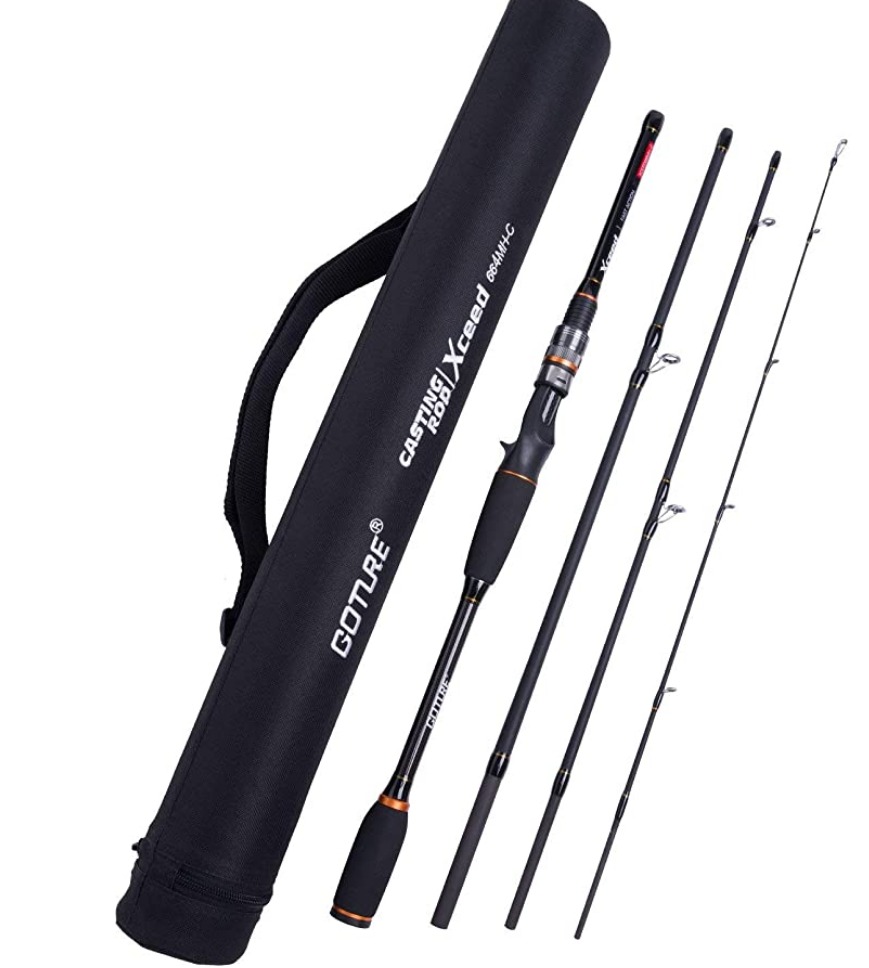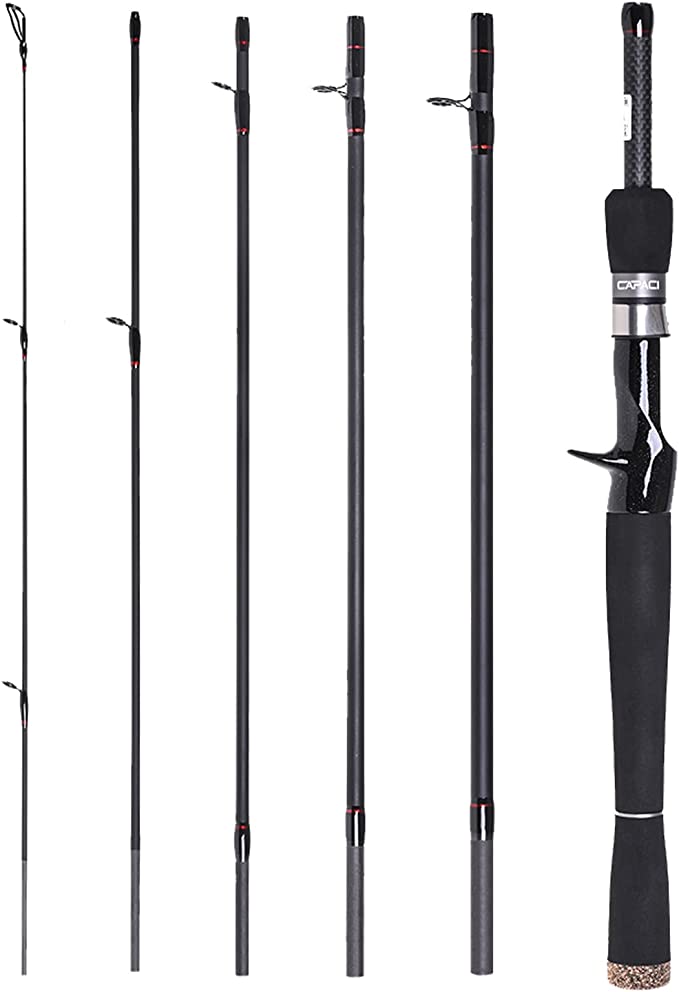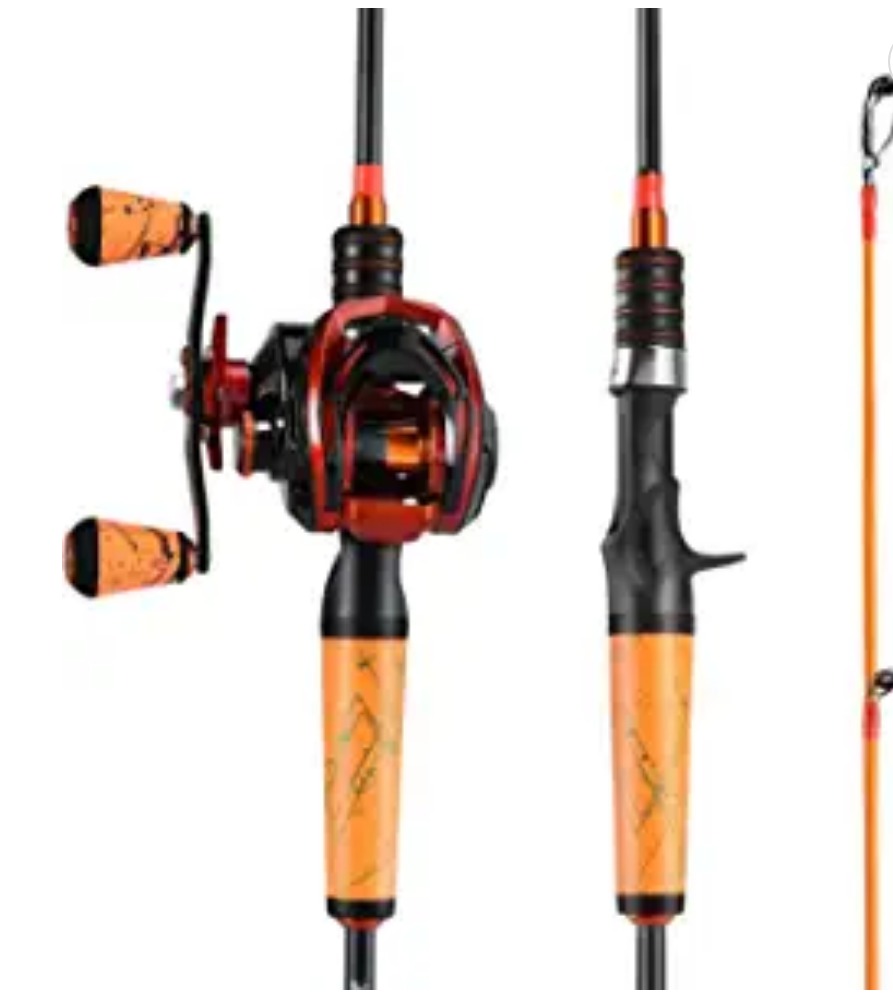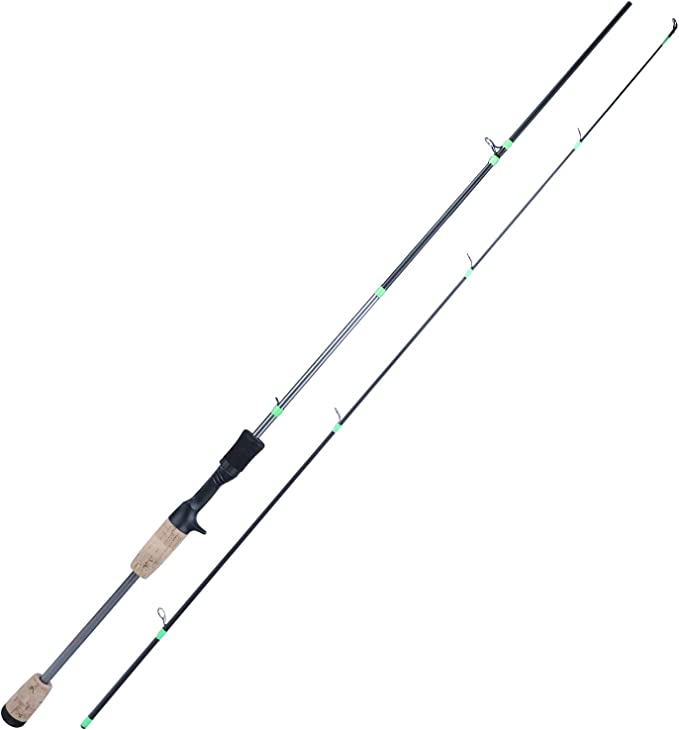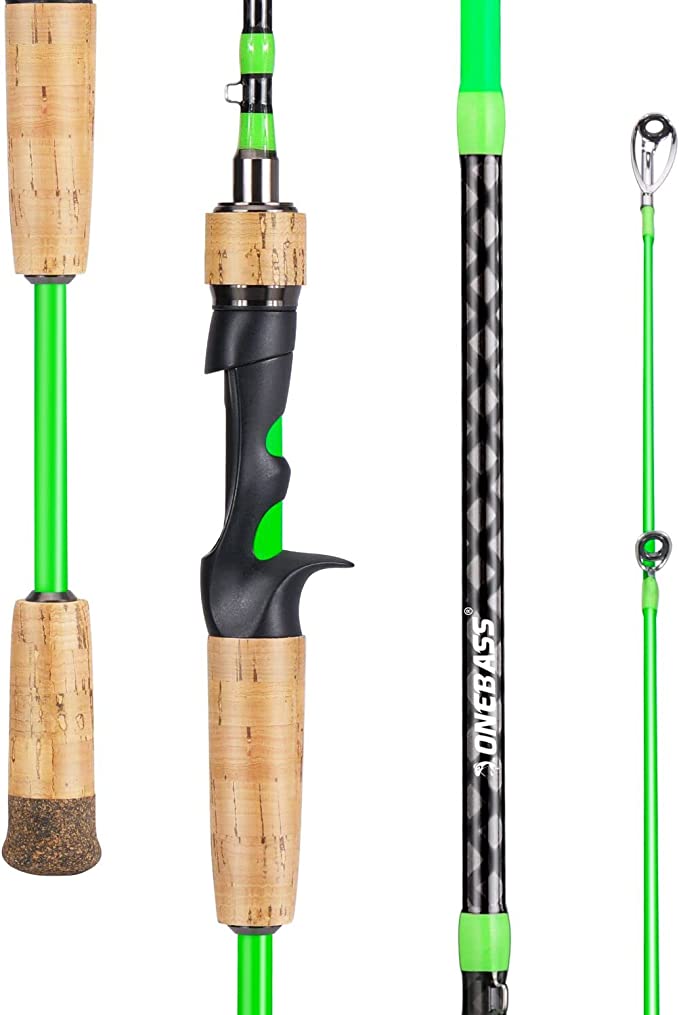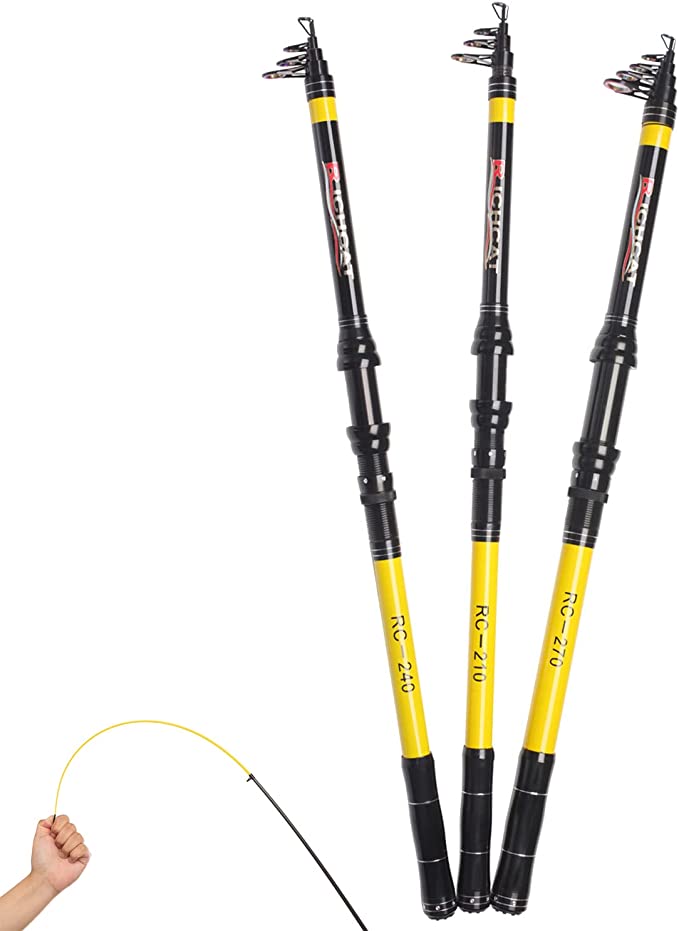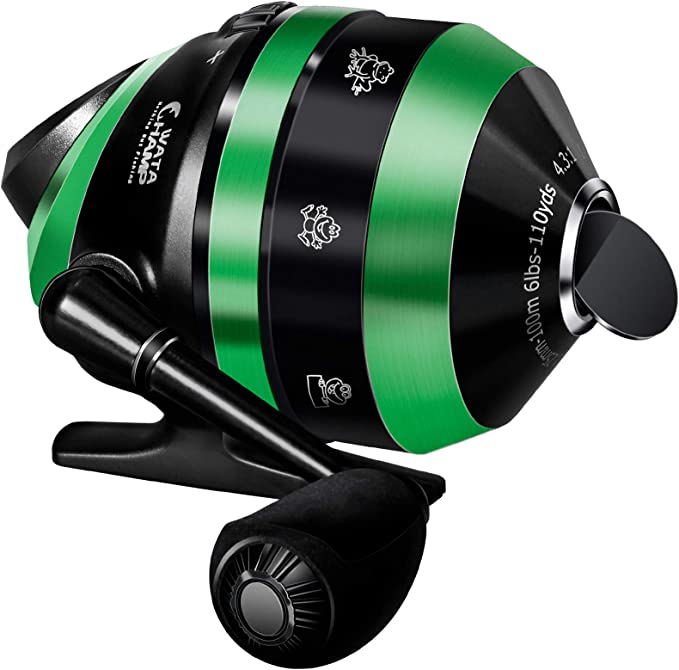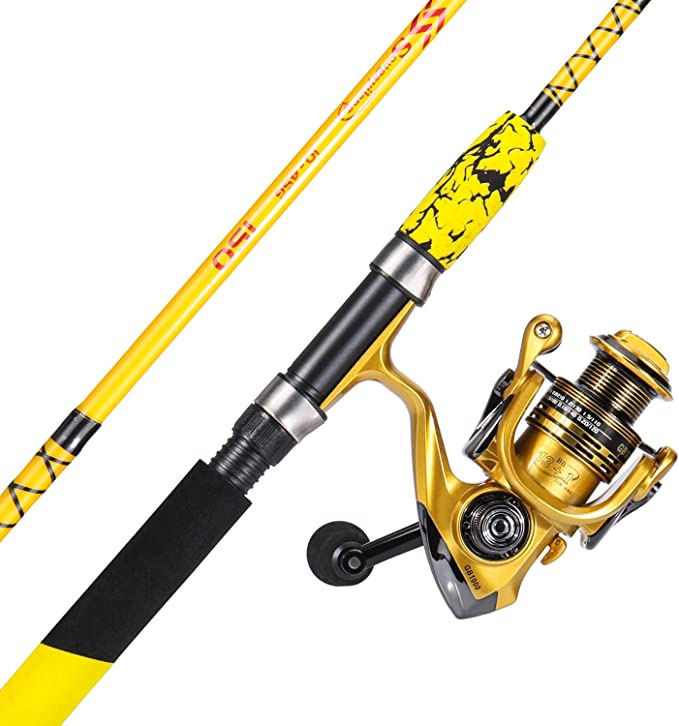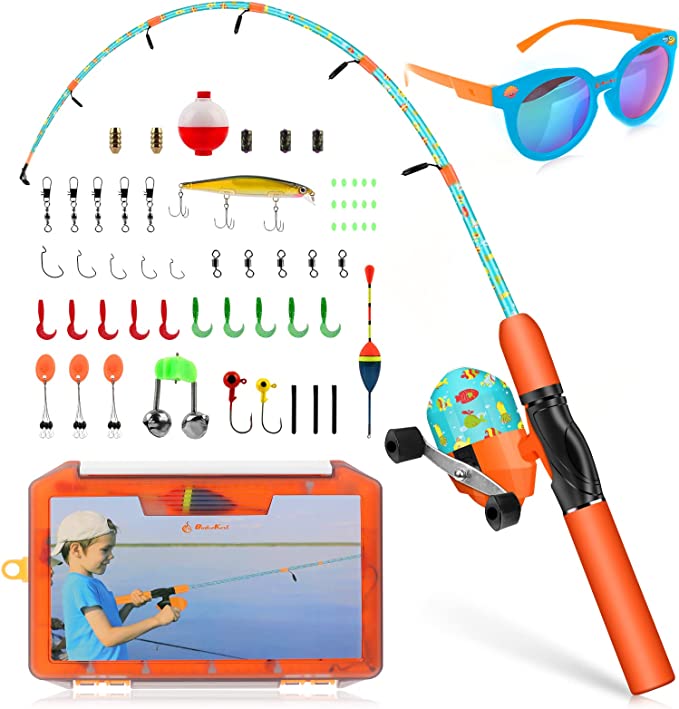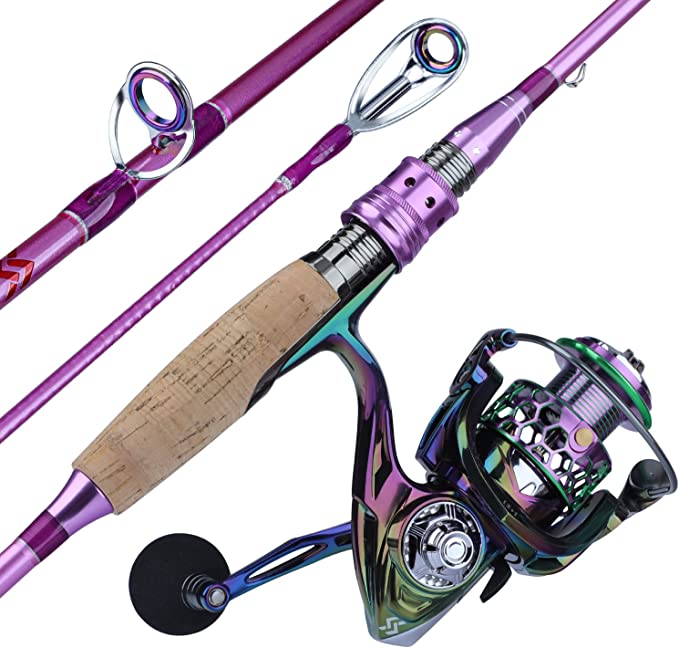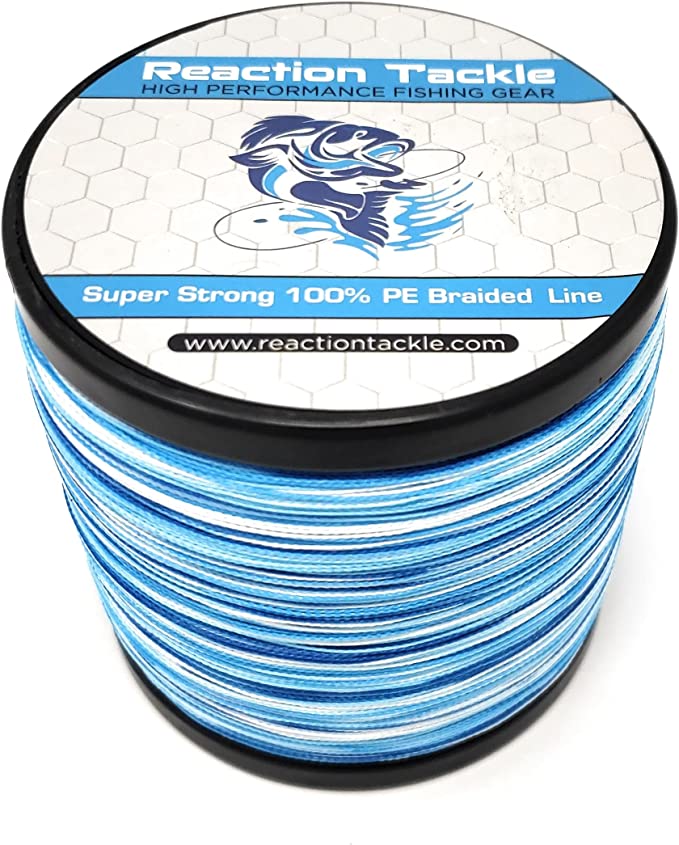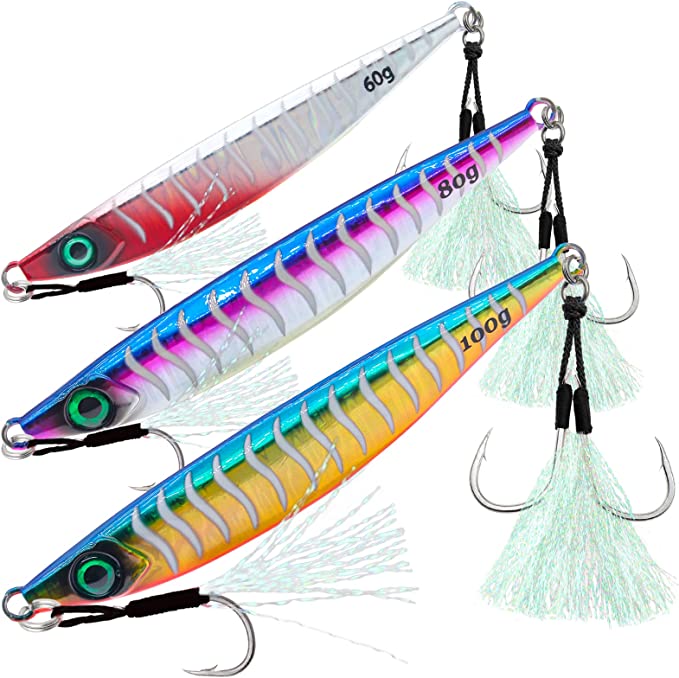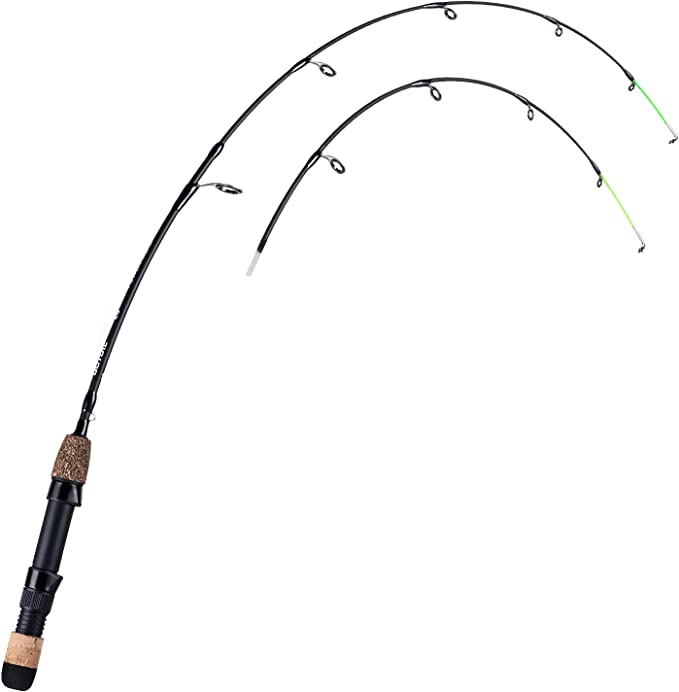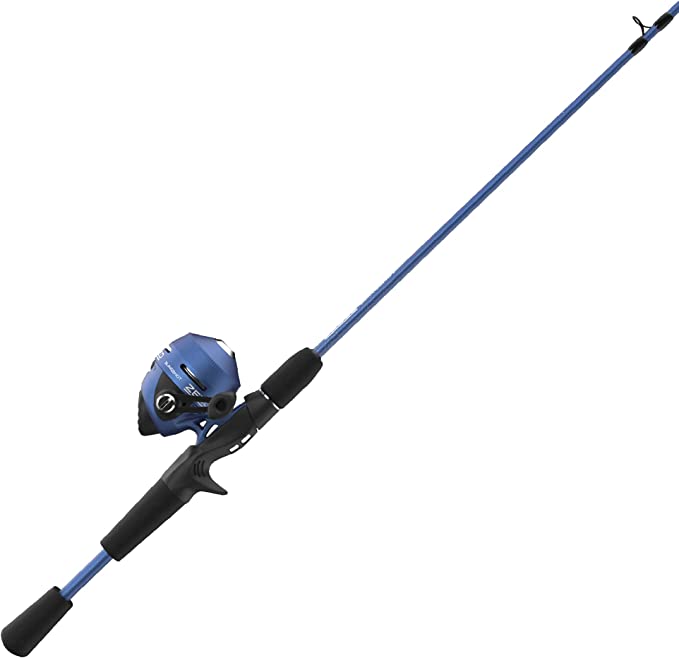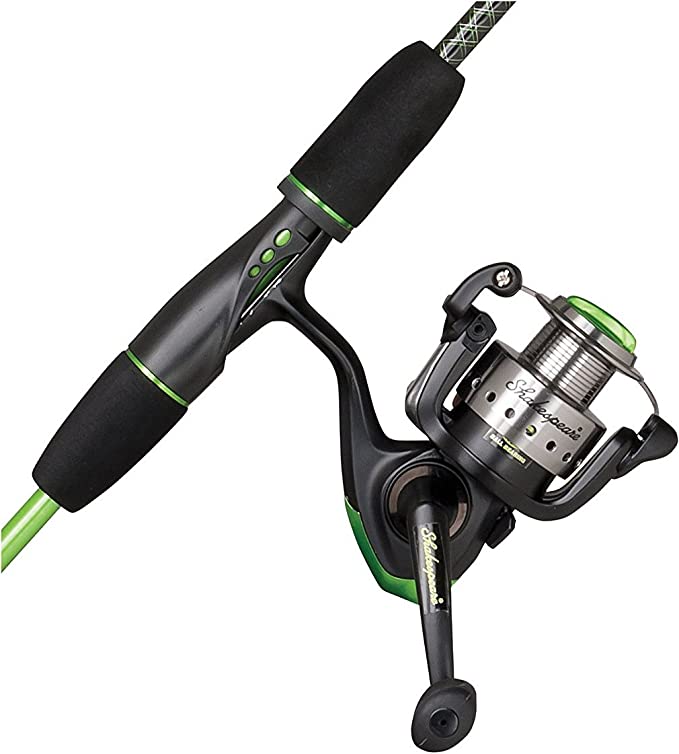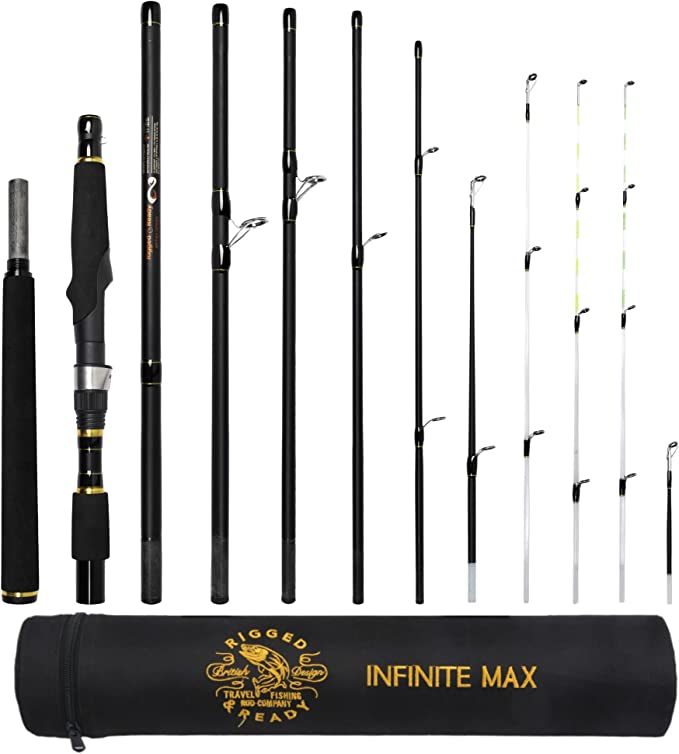The Angler's Paradox: How Science Makes a 3-Piece Travel Rod Perform
Update on Aug. 1, 2025, 8:27 a.m.
For any angler who has ever tried to fit a seven-foot fishing rod into a suitcase, the problem is intimately familiar. It’s the adventurer’s paradox: the desire to explore wild, new waters is often in direct conflict with the cumbersome reality of our gear. For years, the “solution” was a flimsy, collapsible pole that felt more like a compromise than a tool, sacrificing casting performance and sensitivity for the sake of portability. But that era is over. The modern multi-piece travel rod, exemplified by designs like the Goture 3-Piece 24T Carbon Spinning Rod, isn’t a compromise. It’s a marvel of material science and physics, a paradox resolved by engineering.
The Soul of the Cast: Deconstructing the Carbon Blank
At the core of any modern rod lies its blank, the tapered tube that does the work. To say this Goture rod is made of “carbon fiber” is like saying a performance engine is made of “metal”—it’s true, but it misses the entire story. The key detail is “24T,” a designation referring to the material’s tonnage, or its elastic modulus. In simple terms, this measures the carbon fiber’s stiffness.
Imagine two athletes. One is a powerlifter, incredibly strong and rigid but not very flexible (high tonnage, like 40T). The other is a gymnast, possessing explosive strength combined with remarkable flexibility and resilience (medium tonnage, like 24T). The 24T carbon fiber blank is the gymnast. It has the ideal blend of stiffness to powerfully cast a lure and drive a hook home, but also the necessary flexibility to bend deeply without breaking when a strong fish makes a sudden run.
This is the physics of a cast in action. As you bring the rod back, the blank loads, storing potential energy like a drawn bow. The 24T material’s specific modulus dictates how efficiently it stores and then, in a whip-like explosion, releases that energy into the line, creating casting distance and accuracy. This blank also speaks a language, defined by its “Power” and “Action.” A Medium (M) Power rating signifies its overall strength, while a “Fast” Action, typical for such rods, means it bends primarily in its top third. This fast tip provides lightning-quick sensitivity for detecting subtle bites and enables rapid, precise hooksets.
The Unsung Hero: The Art and Science of the Ferrule
Herein lies the multi-piece rod’s greatest engineering challenge and its most elegant solution: the joints, or “ferrules.” A lesser rod feels clunky because these connection points create “flat spots” in the rod’s natural curve, disrupting the flow of energy. A well-designed travel rod, however, features precision-engineered ferrules that turn a series of tubes into a single, cohesive unit.
Think of the human spine. It is not a rigid pole but a series of vertebrae that allow for fluid motion while seamlessly transferring immense force. The ferrules of a quality 3-piece rod act in the same way. The most common modern design is the “tip-over-butt” ferrule, where the top section of the blank snugly slides over the bottom section. This design maintains the blank’s internal diameter and allows the rod’s stress curve to flow smoothly through the joint under load. It ensures that when you fight a fish, the pressure is distributed evenly along the entire length of the rod, just as a one-piece blank would be. It is the unsung hero that allows the rod to bend in a perfect, parabolic arc, making it feel sensitive and responsive, not like three separate pieces bolted together.
The Silent Performer: Line’s Journey Through Ceramic Gates
If the blank is the rod’s soul, the guides are its nervous system, guiding the line and transmitting information. The use of wear-resistant ceramic guides is a critical feature rooted in the science of friction and heat. Ceramic is incredibly hard—materials like Silicon Carbide (SiC) or Alconite used in guides rank high on the Mohs hardness scale, making them virtually immune to being grooved by abrasive braided lines.
More importantly, ceramic is exceptionally smooth, creating a low-friction pathway for the line. This is the science of tribology at work. As your line shoots out during a cast, it whispers through these ceramic gates with minimal resistance, preserving the kinetic energy generated by the blank and maximizing casting distance. Furthermore, friction creates heat. A fast-running fish can pull line through the guides so quickly that significant heat builds up, potentially damaging a monofilament line. The ceramic inserts, combined with their stainless-steel frames, act as a miniature heat-dissipation system, drawing heat away from the line and protecting that vital connection to the fish.
The Final Inch: Transmitting the Signal Through Cork
The final link in this chain of performance is the cork grip, the point where all the rod’s transmitted information becomes a tactile sensation in the angler’s hand. The choice of cork over a synthetic foam like EVA is a deliberate one, based on the physics of vibration. Cork’s unique, air-filled cellular structure gives it a very low damping coefficient.
Imagine tapping on a wooden drum versus a foam pad. The drum skin (cork) vibrates crisply, transmitting the full character of the tap to your hand. The foam pad (EVA) absorbs the impact, deadening the sensation. This is what happens on a fishing rod. The subtle tick of a lure bumping over a rock or the almost imperceptible “inhale” of a bass taking a soft plastic bait are high-frequency vibrations that travel down the carbon blank. A cork handle transmits these vibrations with high fidelity, giving you a clear, detailed picture of what’s happening at the end of your line. It is the sensory organ that makes fishing a sport of feel, not just sight.
An Engineered Ecosystem
A modern travel rod like the Goture 3-piece is far more than a collection of parts; it’s a finely tuned ecosystem. The gymnastic resilience of the 24T carbon blank generates power and sensitivity. The spinal column of the ferrules ensures that power is transferred seamlessly. The low-friction ceramic guides preserve that energy for long casts while protecting the line. And finally, the high-fidelity cork handle delivers the story of the lure and the fish directly to your brain. It is the beautiful and accessible result of applied science, a solution that resolves the angler’s paradox and proves that you no longer have to choose between performance and the freedom to explore.
